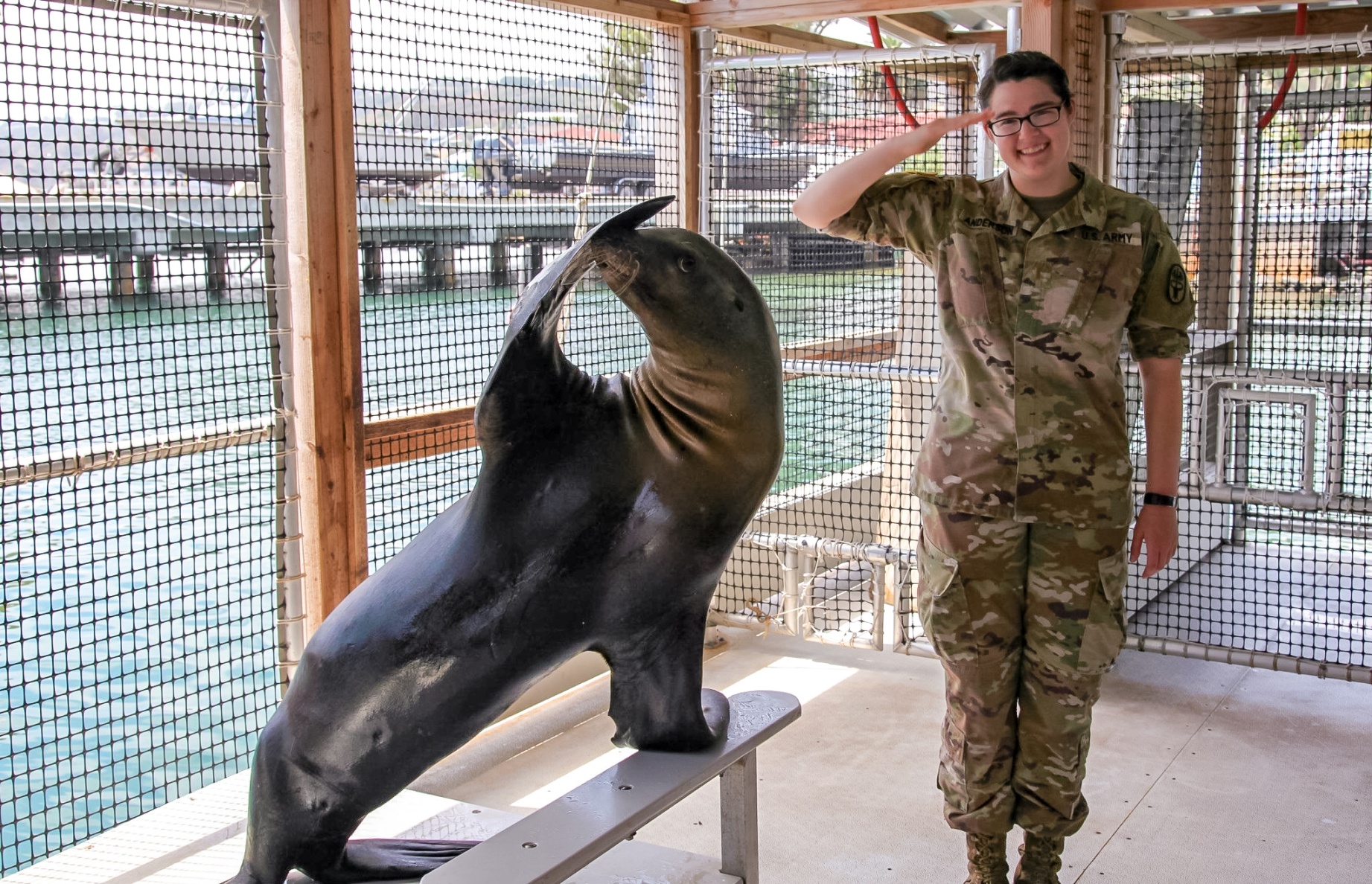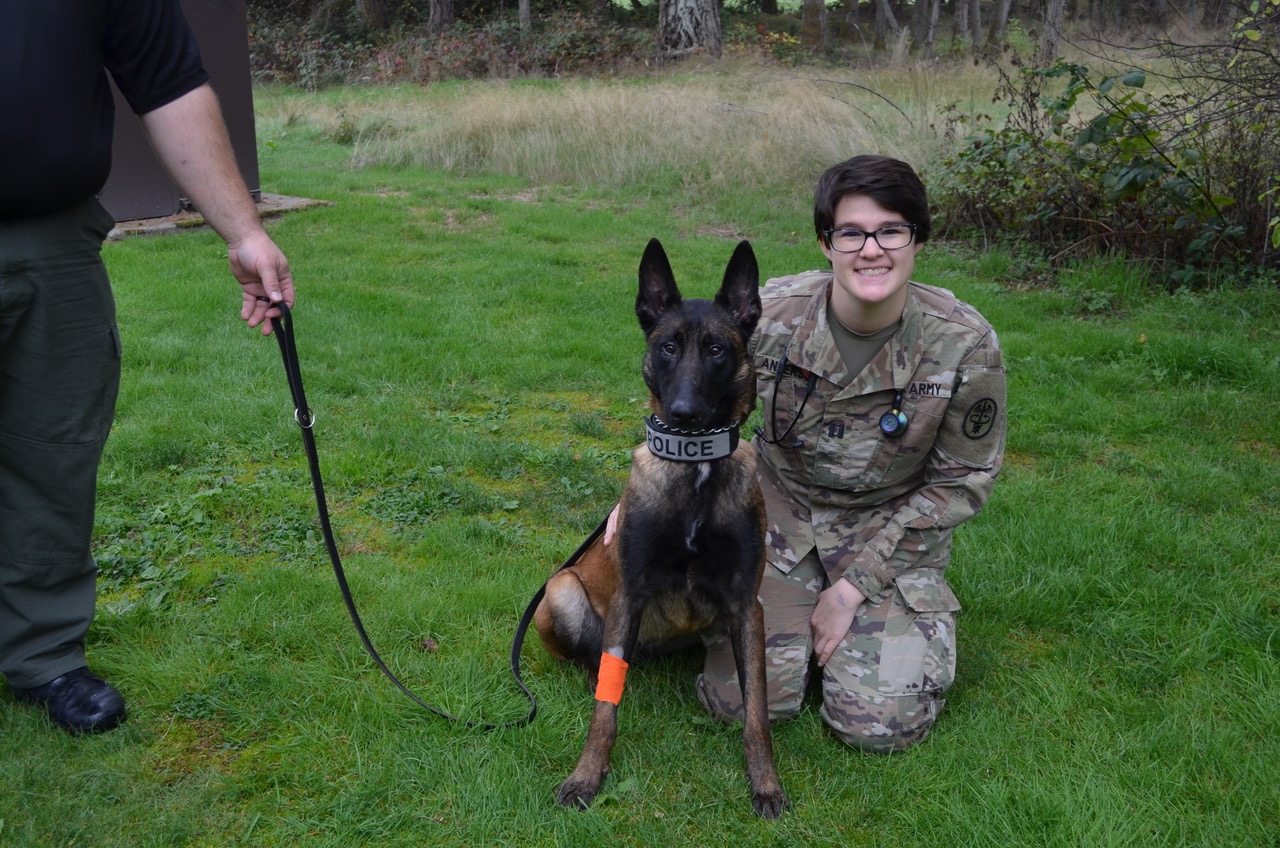Graduate Profile: Capt. Stacie Anderson
Veterinarians in the military wear many hats. In addition to the Military Working Dog mission, military veterinarians see appointments for privately owned animals, perform the food safety mission for the military services, and perform leadership duties by managing the affairs of veterinary hospitals. Military veterinarians take the lead by managing the staff, the core of which are the animal care specialists (68T) and veterinary food inspection specialists (68R).
There are many opportunities for veterinarians in the military, as many specialties are needed to complete missions. The various positions available for doctors of veterinary medicine in the Veterinary Corps include veterinary clinical medicine officers, health professional scholarship program (HPSP) officers, first-year graduate veterinary experience interns (FYGVE), veterinary laboratory animal medicine officers, veterinary preventative medicine officers, field veterinary service officers, veterinary surgeons, and veterinary pathologists.
I am Captain Stacie Anderson, an officer in the United States Army Veterinary Corps and a graduate of the Washington-Idaho-Montana-Utah Regional Program in Veterinary Medicine Class of 2018. I received the HPSP scholarship, a 3-year scholarship, in my second year of vet school at Utah State University. Students in that program attend a basic officer leadership training course following their second year of vet school and gain more officer training specific to veterinary medicine following graduation. HPSP students then typically move into the FYGVE internship program, which is a year-long program put in place by the military to allow newly graduated veterinary corps officers to become more confident and competent in their various roles as a veterinary corps officer. FYGVE interns work closely with clinical specialists during their FYGVE year, then typically move on to their first assignment as an officer in charge of a veterinary branch.
In addition to an interest in biology and medicine, I've always had horses, dogs, and other animals. I decided to become a veterinarian after I graduated from high school. I come from a military family—my mother is a colonel in the U.S. Army Reserves Logistics Corp, my father retired as a lieutenant colonel from the Medical Service Corp, and other members of my family are currently serving or have served in various branches of the military—so joining the U.S. Army Veterinary Corps seemed like an excellent way to reach that goal.


The opportunities for unique experiences are boundless. Having been in my role for only 3 years, I have already gained experience working with bottlenose dolphins and California sea lions when I did active duty training with the U.S. Navy Marine Mammal Program in San Diego. I have also worked closely with experienced clinicians in the FYGVE program to provide the best possible care to our incredible military working dogs and our service members’ privately owned animals. I honestly believe this to be one of the most rewarding paths for a new veterinarian to take during and after veterinary school in order to become a confident and competent leader and clinician.
Originally published in Utah State University School of Veterinary Medicine Magazine Winter 2018-19 Issue

Contacts:
Ammon Teare, ammon.teare@usu.edu
Lynnette Harris, lynnette.harris@usu.edu

